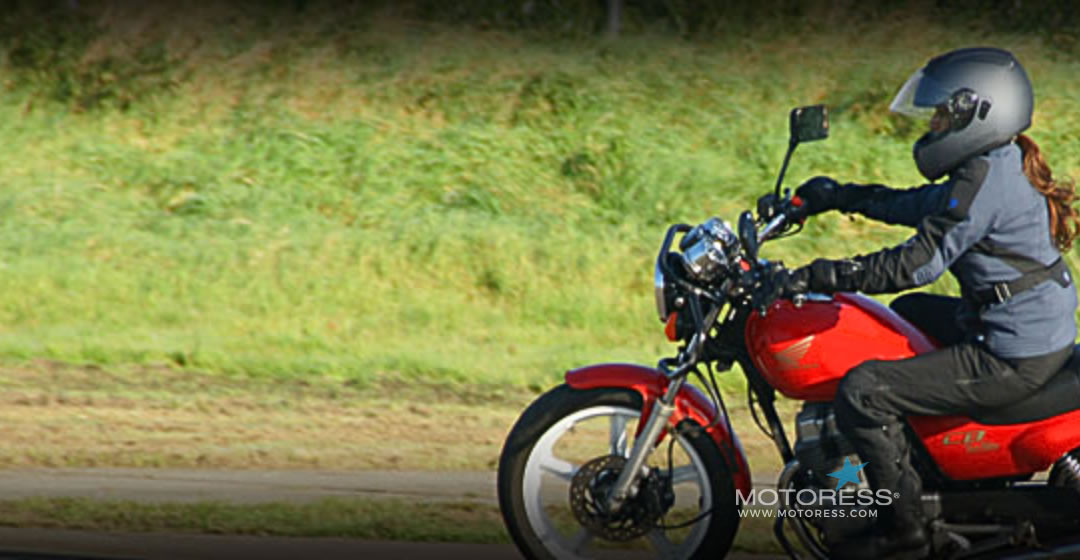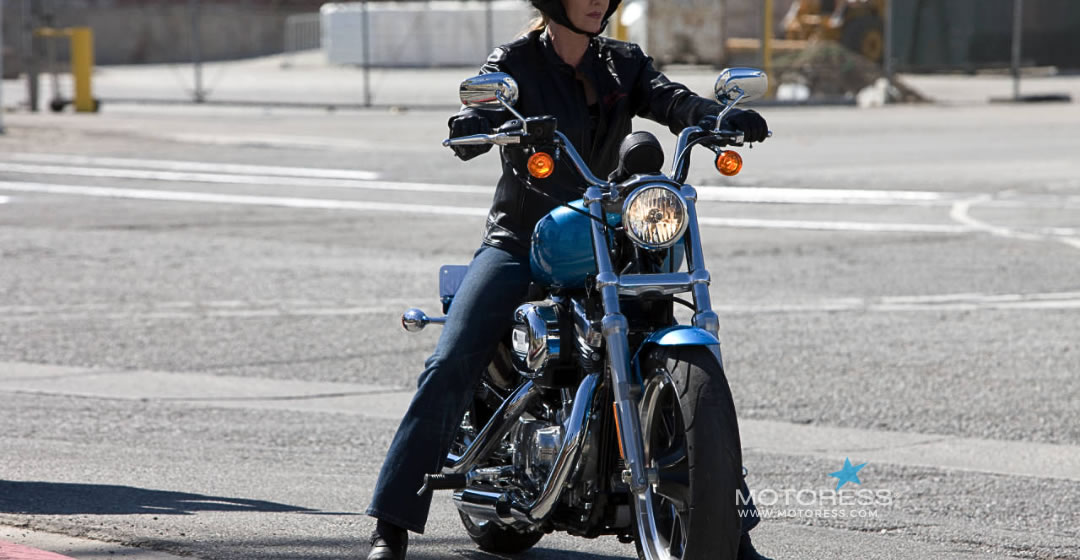Last Update: 11 April 2024

Even for seasoned riders, the reality of how quickly motorcycle skills can rust over time becomes evident after a hiatus from the saddle. Whether the break is long or short, the absence from riding can dull one’s reflexes and proficiency. Therefore, prioritising a refresher, particularly on these five essential motorcycle riding skills, is paramount to maintaining peak performance on the road!
Embrace Mastery: Elevate Your Skills, Don’t Evade Them
On the road, it’s common for riders to actively avoid scenarios that make them feel uneasy, like negotiating tight corners, manoeuvring at slow speeds, or traversing street-car tracks. Rather than pushing their boundaries to master these essential skills, they settle for riding comfortably within their current abilities. Yet, this approach not only restricts the pleasure of riding but also breeds unnecessary apprehension. Consider riders grappling with sharp right turns; rather than confronting them head-on, they might skirt the issue by refusing to halt at intersections, opting instead to coast through, inadvertently heightening their vulnerability to potential hazards.
Mastering these five essential motorcycle riding skills not only offers a valuable refresher but also elevates your riding enjoyment and bolsters your confidence on the road. Prioritise practising them in a controlled environment like a parking lot before venturing out, particularly if you’ve taken a prolonged hiatus from riding. Additionally, make it a habit to hone these skills at the onset of every riding season and whenever you transition to a new motorcycle or scooter. Doing so ensures you stay adept and prepared for any situation that may arise while riding!
ESSENTIAL SKILL (1): SLOW SPEED RIDING
While the thrill of cruising at higher speeds is undeniable, there are numerous occasions when mastering the art of riding slow becomes indispensable. From threading through dense city traffic to seamlessly initiating motion from a complete stop, executing precise turns in confined parking lots, or executing smooth U-turns on roads or highways, proficiency in slow-speed manoeuvring is non-negotiable. This skill proves invaluable when confronted with bumper-to-bumper highway congestion or navigating other demanding situations with finesse and confidence. It is a must.

HOW TO PRACTISE SLOW SPEED RIDING
Mastering slow-speed riding hinges on the finesse of clutch technique and management, expertly navigating within the friction zone. This zone, where the clutch gradually transmits power to the rear wheel upon release, is the key to control and precision in low-speed manoeuvres.
- Harness the Clutch: Precision in slow-speed riding is achieved through meticulous clutch control. Gradually release the clutch to smoothly engage power to the rear wheel, maintaining poise and balance throughout.
- Engage The Rear Brake; Avoid Front Brake: Enhance stability by applying and dragging the rear brake , creating a subtle drag that aids in controlling your motorcycle’s movement. Do not use the front brake.
- Exercise Caution with the Front Brake: Avoid using the front brake at slow speeds, as it can disrupt balance, and stability, lock steering and potentially leading to unanticipated wobbles or spills.
- Maintain A Constant, Steady Throttle: Sustain a steady throttle position to ensure a readily available power supply, in what I refer to as having “money in the bank” for controlled acceleration and deceleration.
- Refine Clutch Mastery: Mastery of slow-speed riding revolves around precise clutch manipulation. Adjust power delivery with subtle clutch movements: releasing for increased power and engaging slightly for decreased power.
- Stay Relaxed: Keep your upper body relaxed, avoiding unnecessary tension in your muscles. Embrace a fluid posture, allowing your motorcycle to respond to your inputs with ease while maintaining a comfortable and controlled demeanour.
Practising these techniques will help you become proficient in slow-speed riding, boosting your overall riding skills and confidence.
ESSENTIAL SKILL (2): SHARP RIGHT TURN FROM A STOP
The sharp right turn from a complete stop remains a daunting challenge for riders, whether they are experienced or beginners. This manoeuvre is particularly demanding because it necessitates executing a tight turn within a limited space, typically the right lane. It requires finesse to prevent the motorcycle’s power from pushing you toward the outside of the turn and potentially into oncoming traffic. Additionally, you must skilfully manage the throttle to maintain smooth and controlled acceleration throughout the turn.
HOW TO PRACTISE SHARP RIGHT TURNS FROM A STOP
Mastering the art of sharp right turns from a complete stop requires precision and practice. Here’s a step-by-step guide to help you improve your skills:
- Clutch Control: Begin by moving off from a stop using clutch management, employing the friction zone technique. This ensures a smooth and controlled start.
- Aim for a 90-Degree Angle: Make an immediate sharp right turn, aiming for a 90-degree angle. Practising narrow turns is crucial for skill development.
- Maintain a Forward Focus: Keep your eyes up and look ahead to where you want to be. Avoid the temptation to look down, as this can disrupt your balance and control.
- Engage with the Motorcycle: Pay attention to the engine’s revs; they will provide valuable feedback for managing power and engine performance.
- Extend Your Right Elbow: Create space between your body and your right elbow by extending it away from your body. This prevents your elbow from cramping and allows for more room to manoeuvre during the turn.
- Apply Push Steering: Use a small amount of push steering by applying pressure to the right handlebar. This helps keep the motorcycle on its intended line or path. Remember, ‘push right, go right.’
- Throttle Control: Once the turn is completed, fully release the throttle, and return your fingers to grip the handlebar securely. Also, move your feet back from the levers (gear-shift and rear brake) to the pegs, positioning your feet on the balls of your feet for optimal control.”
Practice these techniques regularly to enhance your ability to execute sharp right turns from a stop with confidence and precision.
ESSENTIAL SKILL (3): QUICK STOP; HIGH SPEED BRAKING
Performing a quick stop or high-speed braking may seem straightforward, but it’s a skill of paramount importance. This technique can mean the difference between avoiding a collision in an emergency situation or encountering a dangerous mishap during abrupt stops in regular traffic. However, without the proper technique, it can easily go awry.
HOW TO PRACTISE A QUICK STOP
Mastering the quick stop is a vital skill for your safety on the road. Here’s a step-by-step guide to practising it effectively:
- Accelerate in a Straight Line: Start by accelerating in a straight line, reaching at least mid to high 2nd gear.
- Choose a Stopping Point: Identify a predetermined stopping point ahead.
- Apply Both Brakes and Clutch Lever Simultaneously: As you approach the stopping point, apply both brakes (front and rear) simultaneously while also pulling in the clutch lever. Ensure you stop as quickly and safely as possible, without locking up the rear wheel or skidding.
- Squeeze the Controls: Rather than “grabbing” the controls, focus on quickly and smoothly squeezing them. Gradually increase the pressure as needed. You’ll find that there’s more braking power available as you squeeze.
- Commit to the Stop: Once you make the decision to stop, commit to it fully.
- Downshift: While still in motion during the stop, downshift by tapping down on the gear shifter (this is called “passive downshifting”). Aim to be in first gear when you come to a complete stop.
- Keep the Motorcycle Straight and Upright: Maintain the motorcycle in a straight and upright position to utilise the full contact patch of the tires, maximising grip.
- Prepare for Forward Force: Anticipate your body being pushed forward due to the motorcycle’s stopping thrust. Keep your knees against the tank and grip the tank with your knees, chin up, and arms strong to counteract this force.
- Place Left Foot on the Ground: Once you’ve come to a complete stop, place your left foot on the ground. This signals your readiness to perform a traffic check.
- Perform Traffic Checks: After coming to a full stop, perform a traffic check over your left shoulder and then your right shoulder to ensure there are no hazards approaching from behind.
Important: Do not remove your feet from the pegs until you’ve come to a complete stop, and only perform traffic checks after the full stop. Any movement on the motorcycle during this maneuver could alter the motorcycle’s path and result in instability.
ESSENTIAL SKILL (4) : PUSH STEERING/ COUNTER or GYROSCOPIC STEERING
It’s a well-known fact that many riders can obtain their motorcycle licence without fully mastering push steering, which unfortunately contributes significantly to single-vehicle motorcycle accidents. However, this skill is entirely necessary and can’t be overstated.
To practice push steering effectively, consider finding a parking lot, which is the setting for most motorcycle training courses in North America. Here, you can achieve high-speed swerving using your body and the typical bicycle-style steering inputs, even if your test may have suggested otherwise.
Push steering is a manoeuvre you’ll frequently rely on as a rider, and it’s crucial to grasp this skill to become a proficient and safe motorcycle operator.
HOW TO PRACTISE PUSH-STEERING
Push-steering is a fundamental skill for safe and precise motorcycle riding. Here’s a simple guide to practising push-steering effectively:
- Accelerate to Mid/High 2nd Gear or Higher: Start by accelerating in a straight line, reaching at least mid to high 2nd gear or higher.
- Choose a Target: Identify a spot ahead of you that you intend to swerve around.
- Push Forward, Don’t Pull: As you approach your chosen spot, remember that push-steering involves pushing forward, just like you would push a door open. There is no pulling involved in this manoeuvre.
For more in-depth information and guidance on push-steering, consider reading my article dedicated to this essential skill.
ESSENTIAL SKILL (5): RELAXATION TO AVOID PANIC
Mastering the art of riding a motorcycle entails finding the delicate balance between not overreacting and avoiding under-reaction. Often, it’s our own self-imposed fears that present the most significant obstacles to our progress.
SR’s are called “survival responses” and PR’s are “panic reflexes” – they’re bunched into the same set of reactions on a motorcycle.
Riding a motorcycle presents a unique challenge: even when you’re in a state of relaxation, unexpected obstacles can suddenly appear in your path, triggering a natural instinct to panic. This reflex often leads to an abrupt and sometimes excessive application of the brakes, which can result in mishaps. The reality is that on a motorcycle, you can never truly let your guard down at any moment.
HOW TO PRACTISE RELAXATION ON A MOTORCYCLE
Achieving and maintaining a state of relaxation while riding a motorcycle is essential for safe and effective riding. Here’s a practical guide to practising relaxation called S.I.P.D.E:
- Continuous Scanning: Keep your focus on the road and your surroundings. Regularly scan the front, sides, and rear to maintain an ongoing flow of information about your environment.
- Interpret Hazards: Pay close attention to potential hazards, such as a car ahead turning left in front of you, street-car tracks, or upcoming construction zones. Understanding these hazards is a crucial part of staying safe.
- Predict: Anticipate possible scenarios. For instance, if a car were to pull in front of you suddenly, be mentally prepared and ready to react without the need for panic.
- Decide: In the event of a potential hazard, make a clear decision about your course of action. Determine whether you need to stop or if slowing down will suffice.
- Execute: Execute the chosen operation with precision and confidence. For example, if a quick stop is necessary, ensure your abilities are well-honed and sufficient to perform it effectively.
Practising these steps consistently will help you stay relaxed and in control on your motorcycle, allowing you to navigate potential hazards with confidence and composure.”
Indeed, skill development is an ongoing process in motorcycling, and the ever-changing road scenarios and transitions between different types of motorcycles add depth and excitement to the journey. Embracing these variables is what makes us expert motorcycle operators, ready to adapt to new challenges and enjoy the adventures that lie ahead.
If you have any questions or are interested in private refresher training, please don’t hesitate to reach out. Your commitment to safety and continuous improvement is commendable and contributes to the overall enjoyment of riding for everyone on the road.
Ride safe and enjoy the journey!





8 comments
Hello,
I loved the article “How Mastering These Five Essential Motorcycle Riding Skills Can Keep You Safe And At The Top of Your Riding Game”. You present a informative and well decorated post. Thanks for helping us! Keep up your good job.
Cheers
How can you find so many details? I like how that you arrange everything, as it is truly simple
to read. All in all, I can recommend this guide to everybody who is interested in that subject.
Thanks. That comes from the experience Vicki has riding and teaching these skills. She’s taught thousands of riders and is a motorcycling advocate.
YES, it’s RIDING TIME! (Thank Mother Nature for finally coming out of her groundhog hole!!)
And, as usual, at this time of year especially, be mindful of those early season hazards such as left-over Winter sand in corners and the middle of intersections; wet leaves; early-morning frosty patches and cold-hands/fingers delayed response times!
Happy motoring kids, and BE CAREFUL.
Hi Vicki Gray, I always enjoy your short articles. They are insightful and timely. In the emergency braking and push steering exercises above you may wish to provide a speed reference such as 30 to 50 kilometres. Using mid/high 2nd gear is fine on typical course bikes but it may be too high for many street bikes. Keep up the good work.
Some very good points here. Riding weather is showing itself all over this country! Get out and practice. You never know when the skills will come in handy.
Really good advice and something to think about all the time.
Riding weather is here. Excellent reminder for vets and newbees.